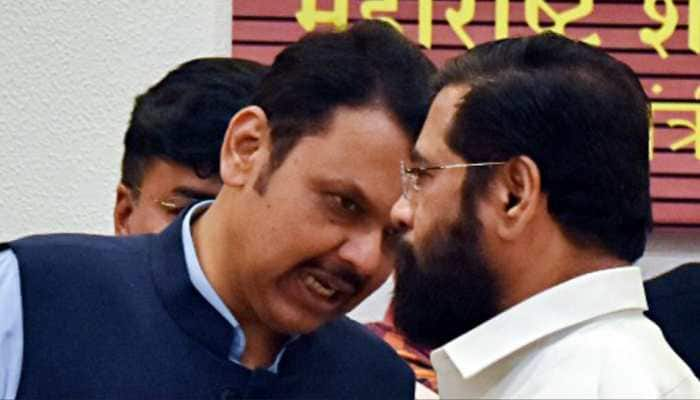RBI Governor Shaktikanta Das says inflation expected to ease in 2nd half of 2022-23
India’s inflation is expected to ease gradually in the second half of the current financial year 2022-23, said the Reserve Bank of India Governor, Shaktikanta Das.
- The retail inflation has been over upper tolerance band of 6 per cent for the fifth consecutive month.
- RBI`s mandate is to keep retail inflation at 4 per cent with a tolerance band of 2 percentage points.
Trending Photos
)
New Delhi: India’s inflation is expected to ease gradually in the second half of the current financial year 2022-23, "precluding the chances of a hard landing" monetary policy actions, said the Reserve Bank of India Governor, Shaktikanta Das. The central bank Governor made the remarks at the ongoing Kautilya Economic Conclave, organized by the Institute of Economic Growth.
Currently, the retail inflation has been over the RBI`s upper tolerance band of 6 per cent for the fifth consecutive month in a row. Apart from this, domestic wholesale inflation has been in double-digits for over a year now.
At present, RBI`s mandate is to keep retail inflation at 4 per cent with a tolerance band of 2 percentage points, i.e. 200 basis points on either side.
Das further said that India experienced a devastating second wave of Covid-19 during April-June 2021, which triggered localized lockdowns, renewed supply chain disruptions, and rising retail margins, which resultantly pushed inflation above 6.0 per cent during May-June 2021.
Further, the inflation pressures were reinforced by adverse spillovers from the current rising global commodity prices, Das said at the event.
"The inflationary pressures occurred even as there was unprecedented damage inflicted by the pandemic on economic activity - real GDP contracted by a humungous 23.8 per cent in the first quarter of 2020-21 and by as much as 6.6 per cent in the full financial year 2020-21," he said.
Against that backdrop, the monetary policy committee (MPC) of the RBI maintained "status quo" on the key lending rates or repo rate during the pandemic despite inflation intermittently breaching the upper tolerance band of 6 per cent.
He substantiated the status quo stance on the rates by saying that it had looked through the higher inflation print to allow the nascent economic recovery to get entrenched.
"Since the inflationary episode lacked any significant demand-pull component, any policy tightening at that juncture would have been detrimental to growth and extracted heavy social costs without being effective in containing inflation pressures," he added.
The stance, he said, was in consonance with the flexibility embedded in the central bank`s flexible inflation targeting framework, in which the primary objective is to maintain price stability while keeping in mind the objective of growth.
Further, on food prices, he said global prices reached a historical high in March and their effects were felt in edible oil, feed cost, and domestic wheat prices."The loss of rabi wheat production due to an unprecedented heat wave put further pressures on wheat prices. Cost-push pressures were also aggravated by supply chain and logistics bottlenecks due to the war and sanctions," the Governor said.
As inflation pressures got generalized, the monetary policy committee in its April and June meetings revised the projection of inflation for 2022-23 at 6.7 per cent, and also increased the policy repo rate by 40 basis points and 50 basis points in May and June, respectively.
Stay informed on all the latest news, real-time breaking news updates, and follow all the important headlines in india news and world News on Zee News.
Live Tv







)
)
)
)
)
)
)
)
)
)
